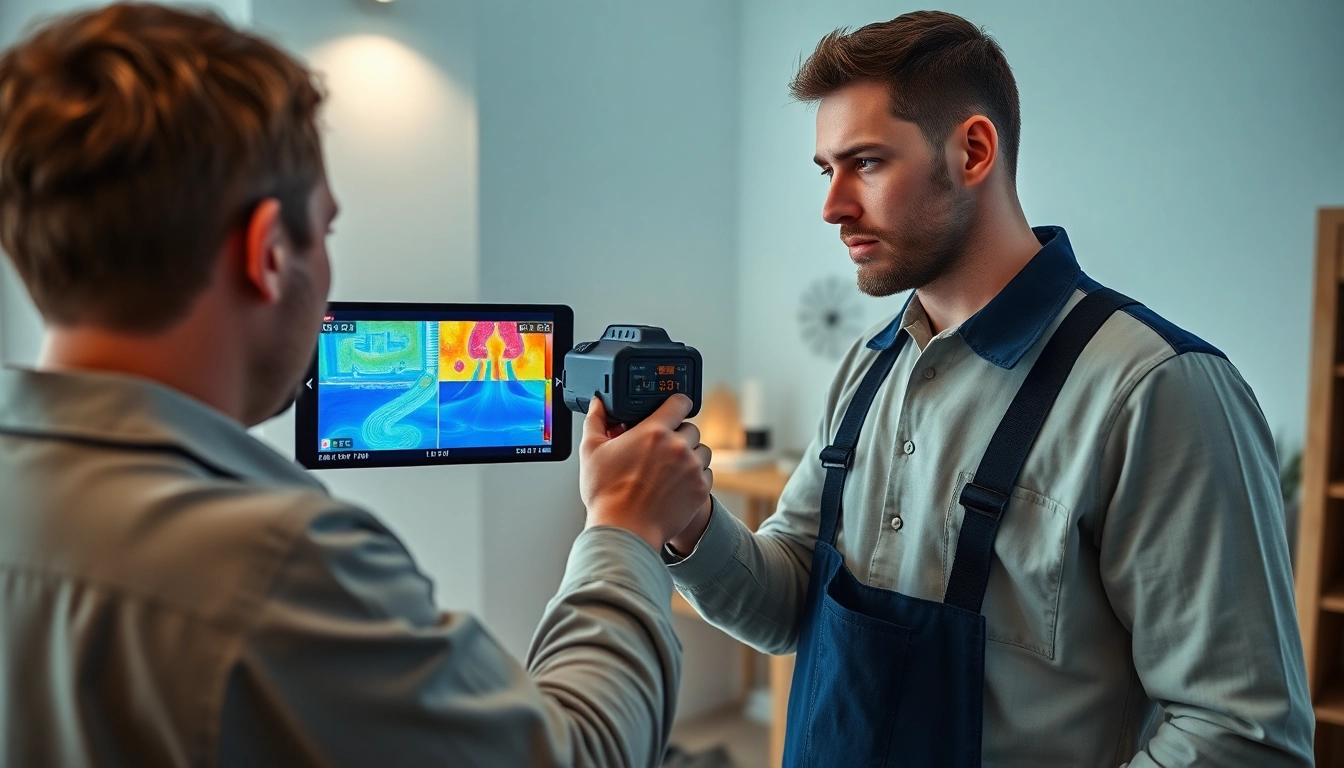Understanding Leak Detection: The Basics
Leak detection is an essential service for homeowners looking to protect their properties from the potentially devastating impacts of water, gas, and other fluid leaks. This critical process not only involves identifying existing leaks but also mitigating future risks. In an era when damage from undetected leaks can lead to costly repairs, advanced leak detection techniques offer invaluable peace of mind for homeowners. Understanding the basics of leak detection lays the groundwork for effective management of plumbing issues that can arise in residential properties.
What is Leak Detection?
Leak detection refers to the technology and methods used to identify and locate leaks in various systems, including water, gas, and heating systems. It is crucial for maintaining the integrity of a property’s infrastructure. Leak detection can prevent significant damage by addressing issues before they escalate, ensuring that homeowners are not left with unexpected costs or hazardous situations.
Common Types of Leaks in Homes
Households can experience a range of leaks, each with its own challenges:
- Water Leaks: Commonly found in plumbing systems, these leaks can occur in pipes, faucets, and toilets.
- Gas Leaks: Often undetectable by smell, these leaks pose serious safety risks and require immediate professional intervention.
- Heating System Leaks: Leaks in radiators and boiler systems can lead to inefficient heating and increased energy costs.
Importance of Prompt Leak Detection
The need for prompt leak detection stems from the potential damage that unchecked leaks can cause. Water damage can lead to structural issues, mold growth, and even pest infestations. Gas leaks can be life-threatening and must be addressed immediately. Prompt detection not only saves homeowners money but also protects their health and safety.
Advanced Technologies in Leak Detection
Technological advancements have transformed leak detection, making it more efficient and less invasive. Various methods are employed by professionals to pinpoint leaks quickly and accurately.
Pressure Testing: How It Works
Pressure testing involves monitoring pressure changes within isolated sections of plumbing or gas systems. If a drop in pressure is detected, it indicates a possible leak. This method is particularly effective for identifying leaks in underground or hard-to-reach areas.
Thermal Imaging: A Game Changer in Detection
Using thermal imaging cameras, technicians can visualize temperature differences in walls, floors, and ceilings. This method is effective for locating hidden water leaks, as moisture causes temperature anomalies that can be easily detected. Thermal imaging minimizes the need for invasive inspections, preserving the integrity of a property.
Acoustic Listening Devices: Detecting Sound Through Walls
Acoustic listening devices can pick up the sound of leaking water or gas, even when the leak is buried under walls or floors. This technology allows for precise targeting of leak locations, reducing the amount of disruption to the property during the inspection process.
Non-Invasive Leak Detection Techniques
Non-invasive leak detection techniques are designed to minimize property disruption while effectively locating leaks. Such methods are especially beneficial in residential settings where maintaining aesthetics is crucial.
Benefits of Non-Destructive Methods
Non-invasive techniques offer several advantages:
- Minimal Damage: Techniques like thermal imaging and acoustic detection allow for leak location without opening walls or digging up floors.
- Cost-Effective: By reducing the need for extensive repairs, homeowners can save money and time.
- Quick Response: Non-destructive methods enable rapid assessment and repairs, preventing further damage.
Case Studies: Successful Non-Invasive Leak Resolutions
Numerous success stories highlight the effectiveness of non-invasive leak detection. In one case, a family discovered unexplained increases in water bills but could not identify the source. Using thermal imaging and acoustic devices, the technicians quickly located a hidden leak behind a wall, preventing further damage and costly repairs.
Evaluating Different Techniques for Your Home
When selecting a leak detection technique for your home, consider factors such as the type of plumbing system, the potential impact of leaks, and the specific concerns of your property. Consulting with a professional leaks detection service can provide valuable insights tailored to your situation.
Cost of Leak Detection Services
Understanding the cost associated with leak detection services is essential for homeowners looking to budget effectively. While prices may vary based on the method used and the extent of the investigation, knowing what to expect can help manage expenses.
Average Pricing for Professional Leak Detection
On average, homeowners can expect to pay between $175 and $350 for professional leak detection services. This pricing may include an initial inspection and the identification of leaks but can increase depending on the complexity of the job or the required technology.
Factors Influencing Leak Detection Costs
Several factors can influence the cost of leak detection services, including:
- Property Size: Larger properties may require more extensive inspections, increasing costs.
- Leak Severity: Major leaks may require advanced detection technologies, which could affect pricing.
- Location: Accessibility may impact costs, especially if special equipment is required.
How to Get Value for Your Investment
To ensure you receive value for your leak detection investment, consider getting multiple quotes from different services. Assess their qualifications, guarantees, and customer reviews. Additionally, understanding what each service includes can help you make a more informed decision.
Future Trends in Leak Detection
The leak detection industry continues to evolve rapidly, with emerging technologies reshaping how leaks are detected and managed. Staying updated on these trends can help homeowners prepare for the future.
Emerging Technologies to Watch for in 2025
As technology advances, new tools and methodologies for leak detection are being developed. For example, advancements in artificial intelligence may enable more accurate predictions of potential leaks before they happen. These technologies are expected to provide even more precise diagnostics, enhancing preventative maintenance strategies.
Impact of Smart Home Tech on Leak Detection
Smart home technology is revolutionizing leak detection. Smart sensors can monitor water usage and notify homeowners of unusual patterns that may indicate leaks. By integrating these systems with home automation, homeowners can actively manage their plumbing systems from anywhere, ensuring prompt responses to potential issues.
Predictions for the Leak Detection Industry
Experts predict that the leak detection industry will continue to grow as awareness of water conservation and safety increases. As more homeowners seek eco-friendly solutions and the demand for reliable services rises, companies will need to adapt by offering more advanced, efficient leak detection methodologies.



